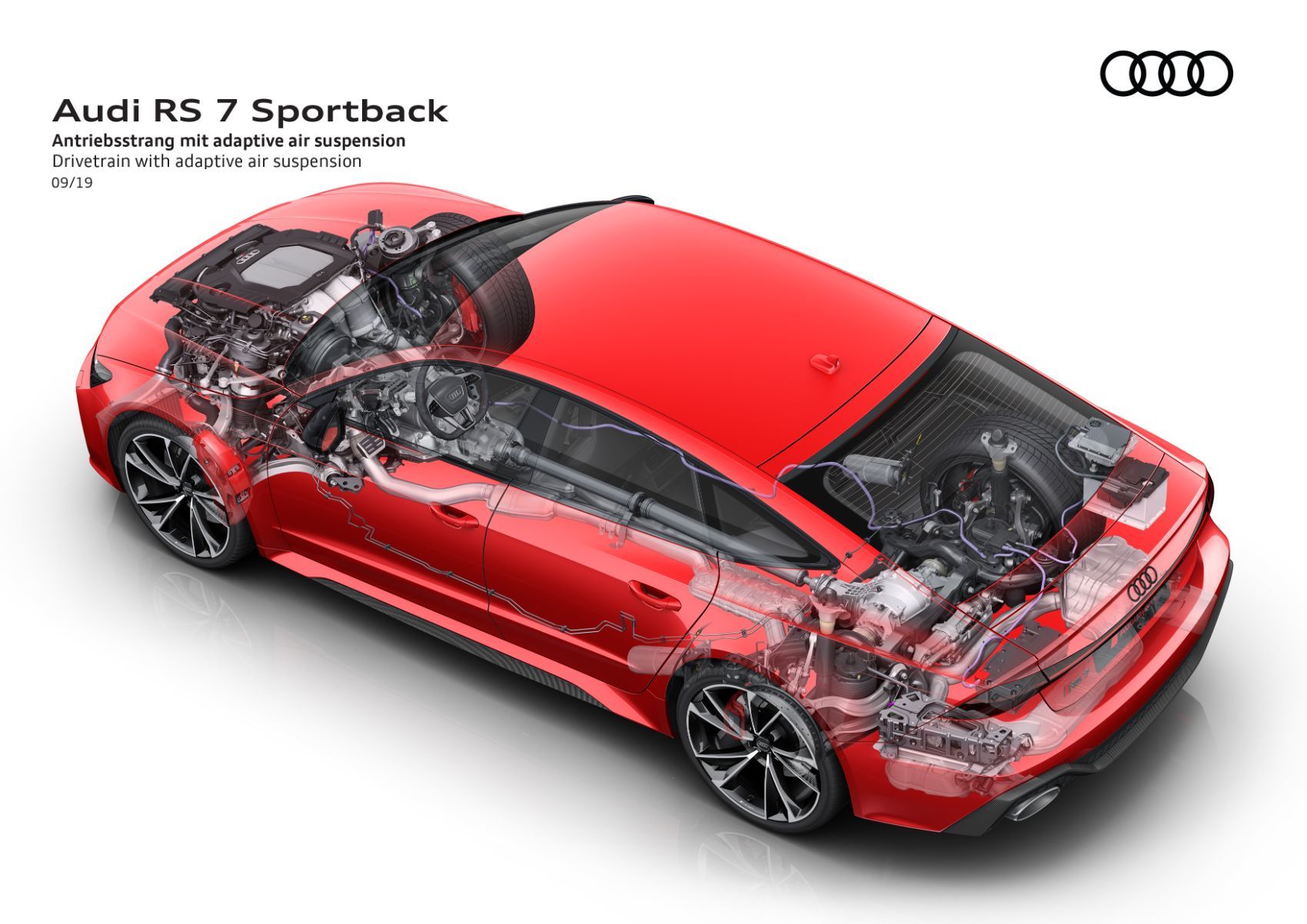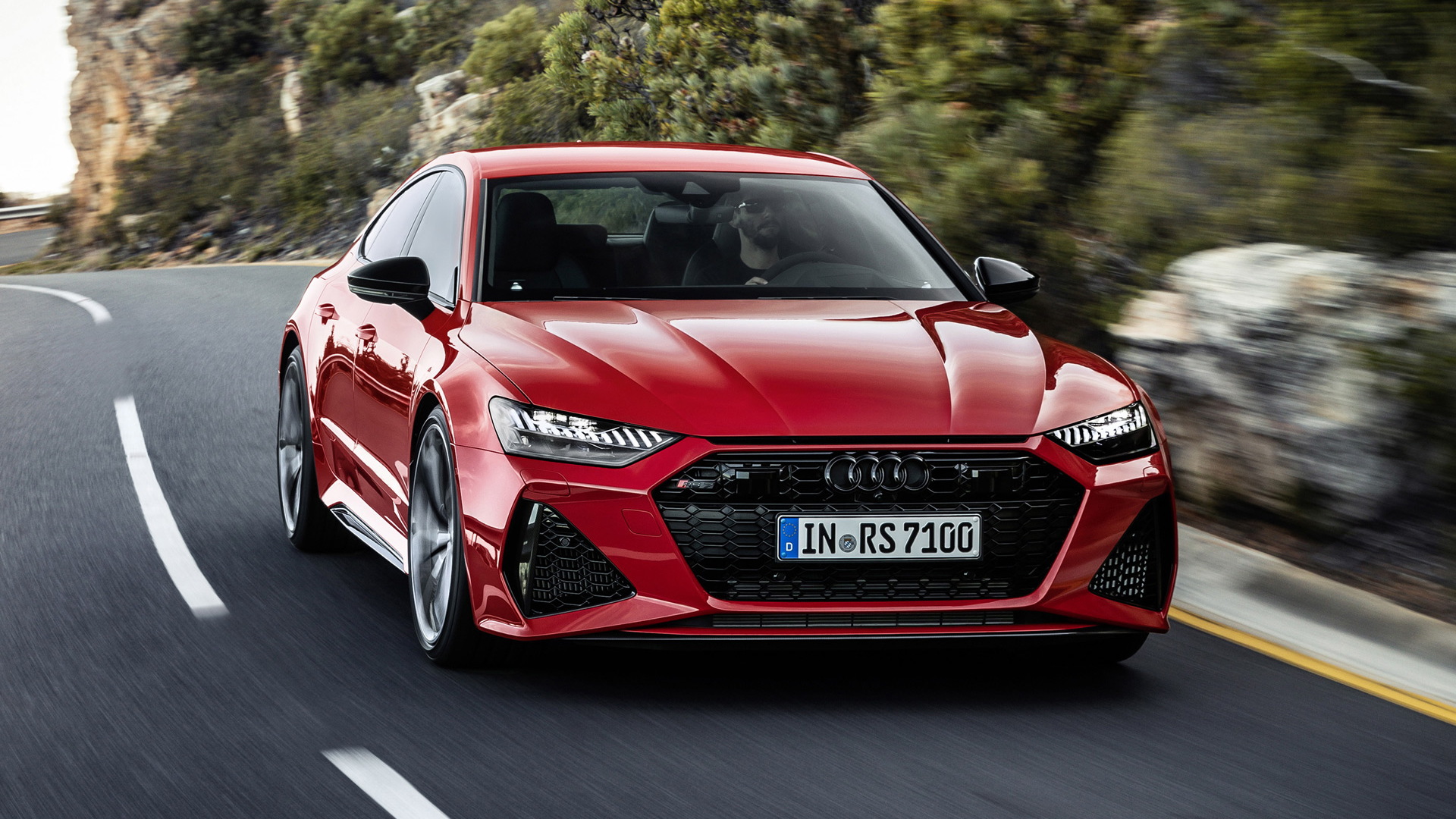
However, I came away from this reunion with bittersweet feelings.The old RS 7 was a wild child but in the most entertaining way, and I miss that rambunctious feel. It’s more luxurious, features better technology, offers superior comfort, and the handling has improved as well (believe it or not, the old generation was even more vague).
2021 audi rs 7 upgrade#
The new RS 7 is an upgrade over the old car in nearly every way. It should also make the fuel economy figures more palatable.

Such a system will add even more weight, but imagining an electrified jolt to help the RS 7 launch with even more gusto has me tickled and may hew closer to the rush of excitement the old model offered. If the rumors are to be believed, the new RS 7 Performance will feature plug-in hybrid power and that has me excited. That’s more than the even higher performance last-generation RS 7 Performance I tested cost, which makes me a bit fearful of how high the price will be for the new version. The largest culprits in the price hike were the carbon-ceramic brakes ($9,000) and a carbon-fiber appearance package ($6,650) that included those 22-inch wheels. My test vehicle’s base price was high enough at $115,045, but options brought the total to $137,540. The RS 7’s price makes my dreams of road trips just that, dreams. Four adults will fit in great comfort and the rear hatch has room enough for luggage with 24.6 cubic feet of cargo space behind the rear seats. That’s even truer if guests come along for the journey. The combination of ride quality and luxury, intermingled with the occasional burst of delightful acceleration, never gets tiring. If I had to pick a car to drive across the country, the RS 7 would be near the top of that list. You might look at the gigantic 22-inch wheels with low profile tires and think that you might need a mouthguard on anything but the best roads, but the ride is shockingly supple (and quiet) with the suspension in its more comfortable settings. The sport seats have aggressive bolstering but remain very comfortable over extended periods. The quiet and well-appointed cabin makes chewing up the miles on a road trip a breeze. There’s some merit to that because the RS 7 is an absolute delight as a touring car. The counterargument is that the RS 7 wasn’t meant for agility. The adaptive suspension does a good job of keeping the big car balanced, but you can tell it’s working overtime.

As with most Audis, the steering is too light and doesn’t offer enough feedback to really feel what the front end is doing. There’s noticeable understeer if you really cook it into a corner, and turn-in response isn’t sharp. The engine is enough to overcome the liftback’s curb weight of 4,938 pounds in a straight line, but in corners there’s no hiding that amount of bulk. With a 19.3 gallon tank, you can still cover about 400 miles on a highway road trip, but the fuel costs add up quickly if you engage in any throttle-related hijinks.Īs prodigious as the RS 7’s power output is, its handling isn’t in the same league. The EPA estimates 15 city, 22 highway, 17 combined mpg on premium fuel. Though the RS 7’s performance figures do induce smiles, the fuel economy does not. The 2021 RS 7 is still obscenely fast, but some of its edge has been blunted-and I miss it. The previous generation seemed to rocket from a stop, enough so that I’d remind passengers to put their heads back against the headrest before any kind of launch. Though the new RS 7’s 0-60 mph time is faster by 0.1 second, it feels like it lacks some of the off-the-line burst of the old car. It happens in the blink of an eye and you’ll have to watch your speed merging onto the highway as you overtake traffic with supreme ease. I didn’t come close to touching any of the top speed figures, but this car absolutely leaps from 20-60 mph. In a straight line, the RS 7 is a rocketship. If you mash the pedal on a corner exit, there’s a small hiccup until the computers figure things out and get you pointed in the right direction, but I prefer that to the frankly dangerous alternative. With the electronic gatekeepers on, it’s easy to roll onto the power with confidence.

Without such wizardry working at the rear wheels, this thing would get squirrely very quickly. All-wheel drive is standard, along with a sport differential that actively splits torque between the rear wheels and is a necessary addition on a car with this much raw power. That’s enough power to get this big car from 0-60 mph in only 3.5 seconds and up to a top track speed of 190 mph with the optional carbon-ceramic brake package (155 mph without it). Under the hood lurks a 4.0-liter twin-turbo V-8 that makes 591 hp and a nearly matching 590 lb-ft of torque.


 0 kommentar(er)
0 kommentar(er)
